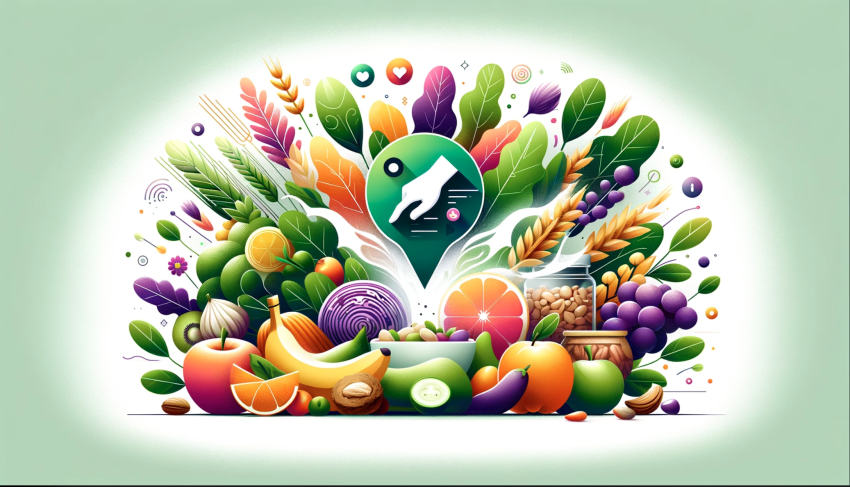How to Use ChatGPT to Start a Plant-Based Diet Blog

Welcome to the exciting world of blogging, where your passion for a plant-based diet can blossom into an engaging and informative blog!
Whether you’re a seasoned vegan or just starting to explore the benefits of plant-based eating, this guide will show you how to leverage ChatGPT, a cutting-edge AI language model, to create a compelling and successful blog.
Let’s dig in!
Understanding the Basics of ChatGPT
What is ChatGPT?
ChatGPT is an advanced AI language model developed by OpenAI. It’s designed to understand and generate human-like text, making it an invaluable tool for content creation, idea generation, and even for answering queries related to plant-based diets.
Why Use ChatGPT for Your Blog?
Efficient Content Creation
- High-Quality Drafts: ChatGPT can generate well-structured and coherent initial drafts for your blog posts. This can be incredibly useful when you’re dealing with writer’s block or need a starting point for your ideas.
- Diverse Content Formats: Whether it’s informative articles, engaging recipes, or even interviews, ChatGPT can adapt to various content formats, providing versatility to your blog.
2. Idea Generation and Brainstorming
- Endless Ideas: ChatGPT can suggest numerous topics and themes, ensuring that you never run out of ideas. It can propose unique angles on plant-based diets, like seasonal recipes, nutritional advice, or the latest research.
- Interactive Content Suggestions: AI can help brainstorm ideas for quizzes, polls, or interactive features that can make your blog more engaging and user-friendly.
3. Enhancing Reader Engagement
- Personalized Responses: You can use ChatGPT to craft thoughtful and personalized responses to comments on your blog, enhancing reader interaction.
- Q&A Sections: Implement AI-driven Q&A sections where readers can get instant responses to common plant-based diet queries.
4. Time and Resource Efficiency
- Quick Turnaround: Producing regular content can be time-consuming. ChatGPT significantly speeds up the writing process, allowing for more frequent updates.
- Resource Optimization: By handling some of the content creation, ChatGPT frees you up to focus on other aspects of your blog, like outreach, photography, or personal engagement with your audience.
5. SEO Optimization
- Keyword Integration: ChatGPT can seamlessly integrate relevant keywords into your content, enhancing SEO without compromising the natural flow and readability.
- SEO-Friendly Titles and Headings: AI can suggest catchy and optimized titles and headings that are more likely to rank higher in search engine results.
6. Learning and Staying Updated
- Research Assistance: ChatGPT can help in researching the latest trends, studies, and news in the world of plant-based diets, keeping your content current and authoritative.
- Content Refinement: AI can assist in revising old blog posts, updating them with new information and insights, ensuring your content remains relevant and accurate.
7. Language and Tone Adaptation
- Tone Matching: Whether your blog has a friendly, professional, or humorous tone, ChatGPT can adapt its writing style to match your unique voice.
- Multilingual Support: If you’re catering to a multilingual audience, ChatGPT can assist in translating content, making your blog more accessible.
Incorporating ChatGPT into your blogging process offers a blend of creativity, efficiency, and engagement, making it easier to maintain a dynamic and informative plant-based diet blog. It’s like having a versatile assistant at your fingertips, ready to help with a wide array of tasks, from the mundane to the complex.
Choosing a Blogging Platform
There are several platforms you can use, such as WordPress, Blogger, or Squarespace. Consider factors like ease of use, customization options, and pricing.
Designing Your Blog
Your blog’s design should reflect the theme of a plant-based diet. Think fresh, natural, and vibrant. Use images of fruits, vegetables, and wholesome meals to create an appealing aesthetic.
Creating a Content Strategy
Decide on how often you’ll post, the types of posts you’ll create (recipes, tips, reviews), and how you’ll incorporate ChatGPT. Consistency is key in blogging!
Writing Your First Blog Post with ChatGPT
Writing your first blog post with the assistance of ChatGPT can be an exciting and efficient process.
Let’s break it down into detailed steps to help you get started:
Step 1: Choosing Your Topic
- Identify Your Passion: Start with what excites you most about a plant-based diet. It could be health benefits, environmental impacts, ethical considerations, or delicious recipes.
- Research Trends: Use ChatGPT to find out what topics are currently trending in the plant-based community. This could be new research, popular recipes, or emerging superfoods.
- Narrow Your Focus: Choose a specific angle for your topic. For instance, instead of a generic post about plant-based diets, you might focus on “Plant-Based Diets for Athletes” or “Easy Vegan Recipes for Busy Weeknights.”
Step 2: Drafting the Post with ChatGPT
- Start with a Prompt: Give ChatGPT a clear and concise prompt. For example, “Create a detailed outline for a blog post about the environmental benefits of a plant-based diet.”
- Expand the Content: Once you have an outline, ask ChatGPT to elaborate on each point. You can request detailed paragraphs, data points, or even anecdotes.
- Incorporate Questions: Think about what your readers might want to know and ask ChatGPT to answer these queries within your post.
Step 3: Adding Your Personal Touch
- Personal Stories: Integrate your own experiences with plant-based eating. Personal stories create a connection with your readers and add authenticity to your post.
- Customize the AI Content: While ChatGPT provides a great starting point, ensure you add your voice and style to the content. Rearrange, edit, and infuse it with your personality.
Step 4: Formatting and Structuring
- Create Engaging Headlines: Use ChatGPT to generate catchy headlines and subheadings that grab attention and are SEO-friendly.
- Organize Logically: Ensure your post flows logically. Start with an introduction, followed by the main body, and end with a compelling conclusion or call-to-action.
- Include Visual Elements: Break up text with relevant images, infographics, or videos. ChatGPT can suggest ideas for visual content that complements your post.
Step 5: Reviewing and Editing
- Fact-Checking: Use ChatGPT to verify any facts, statistics, or data mentioned in your post.
- Grammar and Style: Run the draft through ChatGPT for a grammar and style check. Ensure it aligns with the overall tone of your blog.
- Feedback: Don’t hesitate to ask ChatGPT for feedback on your post. It can provide suggestions for improvement.
Step 6: SEO and Final Touches
- Optimize for Search Engines: Ask ChatGPT to suggest keywords relevant to your topic and integrate them naturally into your post.
- Meta Descriptions and Tags: Use ChatGPT to craft a compelling meta description and relevant tags for your post, enhancing its visibility.
Step 7: Publishing and Promotion
- Timing: Choose the best time to publish based on your audience’s habits, which ChatGPT can help analyze.
- Social Media Teasers: Create captivating social media posts or teasers about your blog post. ChatGPT can help draft these snippets.
Promoting Your Blog
Promoting your plant-based diet blog is crucial to attracting and retaining a dedicated audience.
Here’s how you can effectively use various strategies, including leveraging ChatGPT, to boost your blog’s visibility and reach:
Promoting Your Plant-Based Diet Blog
1. Search Engine Optimization (SEO)
- Keywords: Identify and incorporate relevant keywords (like “vegan recipes,” “plant-based nutrition,” etc.) into your blog posts. ChatGPT can help generate a list of effective keywords.
- Content Quality: High-quality, original content is favored by search engines. Use ChatGPT to ensure your posts are informative, well-written, and engaging.
- Meta Descriptions: Write compelling meta descriptions for each post. ChatGPT can assist in creating concise and catchy descriptions that improve click-through rates from search results.
2. Social Media Marketing
- Platform Selection: Choose platforms where your target audience is most active, such as Instagram, Facebook, Pinterest, or Twitter.
- Regular Posting: Share your blog posts regularly on social media. ChatGPT can help craft unique and engaging captions for each post.
- Engagement: Actively engage with your followers. Respond to comments and messages, and participate in relevant online communities.
3. Email Marketing
- Newsletter Creation: Start a newsletter and encourage your blog visitors to subscribe. ChatGPT can assist in writing captivating newsletter content.
- Regular Updates: Send regular updates about new posts or exclusive content. Personalized emails can increase reader engagement and drive traffic back to your blog.
4. Collaborations and Guest Posting
- Networking: Connect with other bloggers or influencers in the plant-based and vegan communities. ChatGPT can help draft outreach emails or messages.
- Guest Posts: Write guest posts for popular blogs or websites in your niche. Similarly, invite others to guest post on your blog to tap into their audience.
5. Utilizing Multimedia
- Video Content: Create and share video content related to your blog posts on platforms like YouTube or TikTok. Videos can be recipe guides, nutritional advice, or personal vlogs.
- Podcasting: Consider starting a podcast discussing various aspects of a plant-based lifestyle. ChatGPT can assist in scripting episodes or generating topics.
6. Community Engagement
- Forums and Groups: Participate in online forums and groups related to plant-based diets, like Reddit or Facebook groups. Share your expertise and blog posts where appropriate.
- Q&A Sessions: Host live Q&A sessions on social media or your blog, using ChatGPT to help prepare answers to potential questions.
7. Paid Advertising
- Social Media Ads: Invest in social media advertising to reach a broader audience. Target your ads based on interests, geography, age, etc.
- Google Ads: Use Google Ads to appear in search results for specific keywords related to your blog.
8. Analytics and Feedback
- Track Performance: Use tools like Google Analytics to track your blog’s performance. Analyze which posts are doing well and why.
- Surveys and Feedback: Conduct surveys to gather feedback from your audience. ChatGPT can help create survey questions and analyze the responses.
Promoting a blog requires a mix of creativity, persistence, and strategic thinking. By consistently applying these tactics and adapting based on what works best for your audience, you can steadily grow your plant-based diet blog’s audience and influence. Remember, the key is to provide value and build genuine connections with your readers, turning them into a loyal community.
Engaging With Your Audience
Engaging with your audience is a crucial aspect of running a successful blog, especially in the niche of plant-based diets where community interaction and sharing experiences can significantly enhance the value of your content.
Here’s how to effectively engage your readers, with a special focus on how ChatGPT can assist in this process:
1. Responding to Comments and Messages
- Prompt Replies: Regularly check and respond to comments on your blog and social media posts. ChatGPT can help draft thoughtful and personalized responses.
- Engagement Depth: Go beyond simple replies; engage in meaningful conversations by asking follow-up questions or sharing additional tips.
2. Creating Interactive Content
- Polls and Quizzes: Use ChatGPT to create interactive polls or quizzes related to plant-based diets, like “What’s Your Ideal Vegan Meal?” or “Test Your Plant-Based Nutrition Knowledge.”
- Feedback Requests: Encourage readers to share their thoughts or experiences on certain topics, creating a community dialogue.
3. Regular Q&A Sessions
- Live Sessions: Host live Q&A sessions on your blog or social media platforms. Prepare with ChatGPT by generating potential questions and answers.
- Blog Q&A Posts: Create regular Q&A blog posts where you answer common questions about plant-based diets, sourced from your audience.
4. User-Generated Content
- Reader Contributions: Invite readers to contribute their own stories, recipes, or tips. Feature these contributions on your blog or social media.
- Challenges and Contests: Organize challenges or contests, like a “30-Day Vegan Challenge,” encouraging readers to participate and share their progress.
5. Personalized Email Communications
- Newsletter Interactivity: Include interactive elements in your newsletter, like surveys or opinion polls. Use ChatGPT to craft engaging email content.
- Segmentation: Tailor your emails to different segments of your audience based on their interests or engagement level.
6. Community Building
- Online Forums or Groups: Create or participate in online forums and groups dedicated to plant-based diets. Engage in discussions and share valuable insights.
- Meetups and Events: If possible, organize local meetups or online events for your readers to foster a sense of community.
7. Sharing Behind-the-Scenes Content
- Personal Stories: Share your journey with a plant-based diet, including successes and challenges. This authenticity builds trust and relatability.
- Blog Development: Share insights into your blogging process, future plans, or decision-making. Involve your audience in your blog’s journey.
8. Utilizing Analytics for Better Engagement
- Analyzing Interactions: Use tools to analyze which posts or topics generate the most engagement. ChatGPT can help interpret data to understand audience preferences.
- Tailored Content: Based on analytics, tailor your content to match what resonates most with your audience, ensuring continued engagement.
Engagement is not just about pushing content to your audience, but about creating a two-way conversation. By actively involving your readers and fostering a community around your plant-based diet blog, you can build a loyal and engaged audience.
Utilize the capabilities of ChatGPT to enhance these interactions, making them more meaningful and personalized. Remember, the strength of your blog lies as much in your audience as in your content.
Monetizing Your Blog
Monetizing your plant-based diet blog involves implementing strategies that allow you to earn revenue through your content and audience engagement. Here’s how you can approach monetization, with insights into how ChatGPT can assist in each method:
1. Affiliate Marketing
- Partner with Brands: Collaborate with companies that sell plant-based products, supplements, or kitchen equipment. Include affiliate links in your blog posts or social media.
- Honest Reviews: Write honest reviews of products you’ve tried and believe in. ChatGPT can help you draft balanced and engaging reviews.
- Custom Promo Codes: Negotiate with brands to get custom promo codes for your readers, which can encourage purchases and track your conversions.
2. Sponsored Content
- Engage with Advertisers: Reach out to brands aligned with the plant-based lifestyle for sponsored posts. ChatGPT can assist in crafting compelling pitches to potential sponsors.
- Sponsored Blog Posts and Social Media Posts: Create content specifically for these brands, ensuring it’s transparent and fits naturally within your blog’s theme.
3. Selling Digital Products
- E-books and Guides: Create and sell digital products like e-books on plant-based recipes, nutrition guides, or lifestyle tips. ChatGPT can help with content creation for these products.
- Online Courses or Webinars: Develop educational content like online courses or webinars on topics like transitioning to a vegan diet, meal planning, etc.
4. Display Advertising
- Ad Networks: Join ad networks like Google AdSense to display ads on your blog. Your earnings will depend on the traffic and engagement on your blog.
- Direct Ad Sales: Sell ad space directly to businesses relevant to your niche. ChatGPT can assist in creating a media kit to present to potential advertisers.
5. Membership or Subscription Models
- Exclusive Content: Offer a membership program with exclusive content, like specialized recipes, personalized nutrition advice, or members-only forums.
- Subscription Newsletters: Create a premium newsletter offering more in-depth content, early access to posts, or special discounts on products and services.
6. Crowdfunding and Donations
- Patreon or Similar Platforms: Set up a Patreon where followers can support you monthly in exchange for exclusive perks.
- One-Time Donations: Add a donation button to your blog for readers who wish to support your work directly.
7. Consulting and Coaching Services
- Nutritional Consultations: Offer one-on-one consultations or coaching sessions for personalized diet plans or nutritional advice.
- Cooking Workshops: Host virtual cooking classes or workshops focusing on plant-based meals and recipes.
8. Merchandise Sales
- Branded Merchandise: Sell merchandise like t-shirts, mugs, or kitchen tools branded with your blog’s logo or catchy plant-based slogans.
9. Utilizing ChatGPT for Monetization Strategies
- Strategy Development: Use ChatGPT to brainstorm and develop detailed monetization strategies tailored to your blog’s niche and audience.
- Content Creation: Leverage ChatGPT for creating persuasive and engaging content for affiliate marketing, sponsored posts, or digital products.
When monetizing your blog, it’s important to maintain the trust and integrity of your content. Always disclose affiliate links and sponsored content to your readers.
Balance monetization efforts with high-quality content that provides value to your audience.
Remember, successful monetization often depends on the level of engagement and the trust you’ve built with your readership over time.
Staying Informed and Relevant
Staying informed and relevant is key to maintaining a successful plant-based diet blog. This involves continuously updating your knowledge base, keeping abreast of the latest trends, and refreshing your content to keep it timely and engaging. Here’s how to stay on top of your game, with specific strategies where ChatGPT can be a valuable asset:
Staying Informed and Relevant in Your Plant-Based Diet Blog
1. Regular Research and Learning
- Keep Up with Industry News: Regularly read publications, journals, and news related to plant-based diets, nutrition, and health trends. ChatGPT can help summarize and interpret complex articles.
- Follow Thought Leaders and Influencers: Stay connected with key figures in the plant-based community on social media or professional networks to gain insights into new trends and perspectives.
2. Attending Events and Webinars
- Participate in Conferences and Workshops: Attend industry events, either virtually or in-person, to stay updated and network with peers.
- Engage in Online Webinars and Courses: Enroll in webinars or short courses to deepen your understanding of specific topics within the plant-based realm.
3. Networking with Professionals
- Connect with Dietitians and Experts: Building relationships with nutritionists, dietitians, and other experts can provide you with credible information and potential content collaborations.
- Join Online Communities: Participate in online forums and groups related to veganism and plant-based diets to exchange ideas and stay informed about community concerns.
4. Utilizing Feedback and Surveys
- Gather Reader Feedback: Regularly ask your audience for feedback on your content. Use ChatGPT to create and analyze surveys, gaining insights into what your readers enjoy and what they want to see more of.
- Adapt Based on Responses: Adjust your content strategy based on the feedback to ensure your blog remains relevant and engaging to your audience.
5. Content Refresh and Updates
- Regularly Update Older Posts: Revisit and update your older blog posts with new information, research, or developments. ChatGPT can assist in rewriting or adding sections to existing content.
- Incorporate Latest Research and Data: Keep your content evidence-based by integrating the latest scientific research and statistics into your posts.
6. Experimenting with New Content Formats
- Diversify Your Content: Explore different types of content such as podcasts, videos, infographics, or interactive tools to keep your blog fresh and appealing.
- Innovate and Experiment: Don’t be afraid to try new ideas or topics. Use ChatGPT to brainstorm innovative content concepts that can set your blog apart.
7. SEO Adaptation
- Stay Updated with SEO Trends: SEO practices constantly evolve. Keep up with the latest changes in search engine algorithms and adapt your content accordingly.
- Keyword Research: Regularly perform keyword research to find new and trending keywords related to the plant-based diet. Use ChatGPT to generate SEO-friendly content that incorporates these keywords.
8. Continual Learning and Self-Education
- Leverage Educational Resources: Use platforms like Coursera, Udemy, or industry-specific courses to enhance your knowledge about plant-based nutrition, food science, and blogging techniques.
- Read Books and Listen to Podcasts: Dedicate time to reading books and listening to podcasts that focus on veganism, health, and content creation.
Staying informed and relevant requires a commitment to ongoing learning and adaptation. By utilizing resources like ChatGPT, engaging with your community, and continuously updating your content and knowledge, you can ensure that your plant-based diet blog remains a trusted and authoritative source in its niche.
Remember, the more you invest in staying current, the more valuable your blog becomes to your readers.
Conclusion
Starting a plant-based diet blog using ChatGPT can be a rewarding venture. It’s not just about sharing recipes or tips, but about building a community that shares a passion for healthy, sustainable living.
With the power of AI at your fingertips, the possibilities are endless.
Happy blogging!



